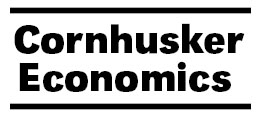Agricultural Economics, Department of

Cornhusker Economics
Date of this Version
1-31-2007
Document Type
Newsletter Issue
Citation
Cornhusker Economics
Abstract
In one of the most comprehensive studies of U.S. hog production, McBride and Key (2003) found that although the cost of producing hogs declines with increasing farm size across producer types (farrow-to-finish, farrow-tofeeder, and feeder-to-finish), the distribution of costs is such that many small and medium-sized operations produce at a cost that is competitive with industrial-scale operations. The study attributed the cost competitiveness to managerial ability, which "is likely to be as important as size economies lowering the costs of hog production" (p. 18). The same view is shared by Ikerd (2001), a well-known advocate of small hog farms. He reports that farm records "have consistently indicated that 20-40 percent of family hog farms are as cost-efficient as are the large-scale, corporate hog operations. So even with current production methods, a well-managed family hog operation can compete with the large-scale corporate hog operations."


Comments
Published in Cornhusker Economics, 01/31/2007. Produced by the Cooperative Extension, Institute of Agriculture and Natural Resources, Department of Agricultural Economics, University of Nebraska–Lincoln.
http://www.agecon.unl.edu/Cornhuskereconomics.html